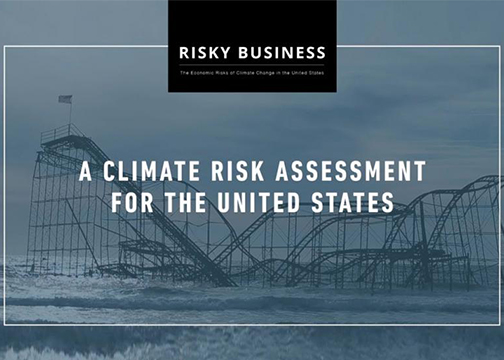The Risky Business Project released a 56-page report titled "The Economic Risks of Climate Change in the United States" on June 24. Launched in October, 2013, the Risky Business Project focuses on quantifying and publicizing the economic risks from the impacts of a changing climate.
The report measures the significant and diverse economic risks from climate change. Specifically, it analyzes the signature effects of human-induced climate change—rising seas, increased damage from storm surge, more frequent bouts of extreme heat—which have specific, measurable impacts on the United States’ current assets and ongoing economic activity. The Risky Business research focused on the clearest and most economically significant of these risks: Damage to coastal property and infrastructure from rising sea levels and increased storm surge, climate-driven changes in agricultural production and energy demand, and the impact of higher temperatures on labor productivity and public health.
The report and its accompanying interactive website explore climate-related issues in each region of the country, emphasizing the consequences on Midwestern agriculture brought by climate change.
“The upper Midwest economy is dominated by commodity agriculture, with some of the most intensive corn, soybean, and wheat growing in the world. Our research shows that under the ‘business as usual’ scenario and assuming no significant adaptation by farmers, some states in the region, like Missouri and Illinois, face up to a 15% likely average yield loss in the next 5 to 25 years, and up to a 73% likely average yield loss by the end of the century. Assuming no adaptation, the region as a whole faces likely yield declines of up to 19% by mid-century and 63% by the end of the century.
The projected increase in Midwest surface air temperatures won’t just affect the health of the region’s crops; it will also put the region’s residents at risk. Over the past 40 years, the Midwest experienced only 2.7 days on average over 95°F. if we stay on our current climate path, the average Midwest resident will likely experience an additional 7 to 26 days above 95°F each year by mid-century, and 20 to 75 additional extreme-heat days—potentially more than 2 additional months per year of extreme heat—by the end of the century.”
The Risky Business Project is a joint partnership of Bloomberg Philanthropies, the Paulson Institute, and TomKat Charitable Trust.



